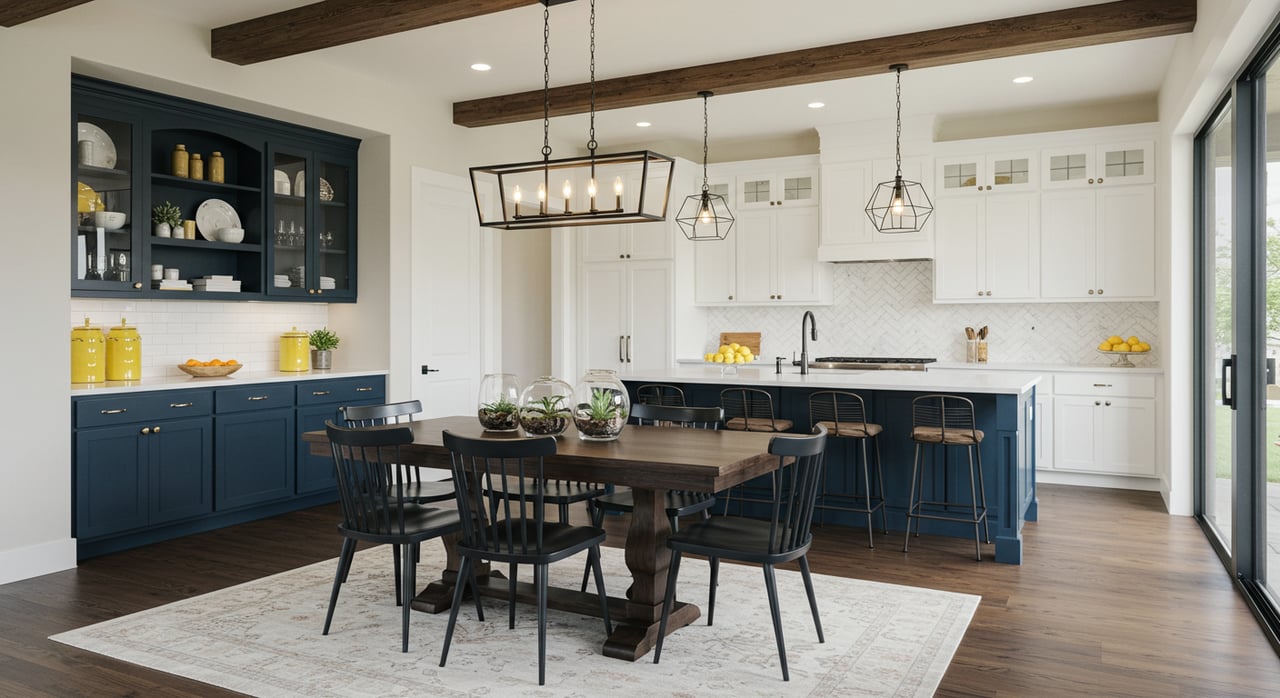You’ve made the decision to sell your home. Considering that you live in a place where there are never enough properties for the potential buyers out there, you feel fortunate with the knowledge that your home will sell quickly and at a great price. In other words, you’ve made a sound investment purchasing a home in the Bay Area. With the sale, you’ll reap all the benefits without the headaches. While this perspective is primarily true, there are a few important aspects to be aware of to not only ensure a smooth process but to get the most out of your home investment.
Staging
So, you’re selling in a highly sought-after part of the country with a limited number of homes available. This conjures up images of potential buyers lurking in the online shadows of real estate listing sites just waiting for the chance to jump on the first available home or condo. You ask yourself, “Do I really need to fix that broken doorknob or replace the cracked tiles in the pantry?” It may not be necessary for an eventual or even quick sale since you aren’t competing with a lot of other sellers and their swanky, upgraded homes.
But consider this: if you’re interested in getting the most out of your investment, even the simplest of repairs can add thousands to your sale price. It isn’t necessarily that the sale price you originally decided upon will get reduced because of these seemingly small cosmetic imperfections. Multiple offers typically keep it hovering safely above this line. It’s just that you may encourage a greater price hike with those offers if the home is looking its best. Remember your buying experience? The enticement of not only a sought-after home but one that is well-tended to can lead to more excitement among competing buyers leading to an offer that might surprise you.
But consider this: if you’re interested in getting the most out of your investment, even the simplest of repairs can add thousands to your sale price. It isn’t necessarily that the sale price you originally decided upon will get reduced because of these seemingly small cosmetic imperfections. Multiple offers typically keep it hovering safely above this line. It’s just that you may encourage a greater price hike with those offers if the home is looking its best. Remember your buying experience? The enticement of not only a sought-after home but one that is well-tended to can lead to more excitement among competing buyers leading to an offer that might surprise you.
Renovations
Here’s where it’s really helpful to get in touch with a realtor for advice. I’m not talking about the simple repairs mentioned already, those visible improvements that make your house sparkle to expectant buyers. I’m talking about the renovations that can adversely affect the asking price of the home, and potentially thin out multiple offers. Leaky roofs, cracked foundations, creeping mold, and myriad other issues can often take the front seat in price negotiations and dampen enthusiastic competition. Let me also clarify that I’m not talking about upgrades to modernize your home. Sprucing up bathrooms and kitchens, or turning that 70s style office of wood paneling and dark shutters into a more modernized look is usually not necessary. Buyers would rather address style upgrades. And the advantage of being in an intense seller’s market makes these upgrades a moot point when it comes to price.
No, it’s the leaky roofs and the cracked foundations that will affect the price. Why? Because these and other potentially hidden issues can lead to greater problems down the road; problems that buyers may not be willing to take on. Any one of these can also add to increased underwriting costs for the buyer. These issues not only fizzle the competitive zeal among buyers but worse, can adversely affect the negotiation process due to ironing out the details with a fair price if repairs are not made and the cost of insurance goes up. You’re typically much better off dealing with that leaky roof ahead of time.
No, it’s the leaky roofs and the cracked foundations that will affect the price. Why? Because these and other potentially hidden issues can lead to greater problems down the road; problems that buyers may not be willing to take on. Any one of these can also add to increased underwriting costs for the buyer. These issues not only fizzle the competitive zeal among buyers but worse, can adversely affect the negotiation process due to ironing out the details with a fair price if repairs are not made and the cost of insurance goes up. You’re typically much better off dealing with that leaky roof ahead of time.
Taking Away the Headache
Now that you’re aware that you’ve got issues to address with the home, the next question may be where to start. Or, better, “How can I do this with the least amount of stress?” Often, home repair contractors come with a few possible negatives. I’ve heard my share of woes from clients who’ve experienced delays from contractors that end up costing them much more than the actual repairs themselves. Or, the repairs weren’t done correctly or to code which resulted in having to find a different contractor willing to fix the previous one’s mistakes. Be careful who you work with.
What to do?
After several years in the business, I’ve learned a few things about being efficient AND effective in the process of addressing repairs. Following these steps will, at the very least, mitigate the stress, and at most will ensure a smooth process all the way to the close:
After several years in the business, I’ve learned a few things about being efficient AND effective in the process of addressing repairs. Following these steps will, at the very least, mitigate the stress, and at most will ensure a smooth process all the way to the close:
- Inspections always come first, even though buyers may do them independently. Without an inspection, you may miss a big problem, and it’s better to know as much as you can ahead of time to budget for the repairs.
- Formulate a strategy for the repairs keeping in mind staging and property preparation is a priority. Look at the big picture first. What would a buyer object to when it comes to repairs? What is it that you’re able to repair or replace without breaking your bank in addition to getting a return on your investment. Your ultimate goal is a smooth path to an eventual sale, without any major roadblocks or surprises.
- Ask your realtor for a list of reputable contractors. You may even be able to ask your realtor to take on the management of contractors because they oftentimes have long-term relationships with them.
- I typically take care of my clients’ renovation projects and get multiple bids from my network of contractors. I prepare a spreadsheet with the bids (costs) of all the details and total costs.
- With this information and a preliminary budget, it’s easier to make decisions on staging and improvements. Sometimes the budget may be less than the total costs for all the needs on the list. We then discuss what to risk leaving on the list for the buyer to inherit.
- After all is said and done, a sale price is agreed upon based on the new condition of the property.
Following this process with renovations and staging will likely result in creating a buzz among your buyers and clear the path for a smooth real estate transaction, ultimately leading to more money in your pocket.







